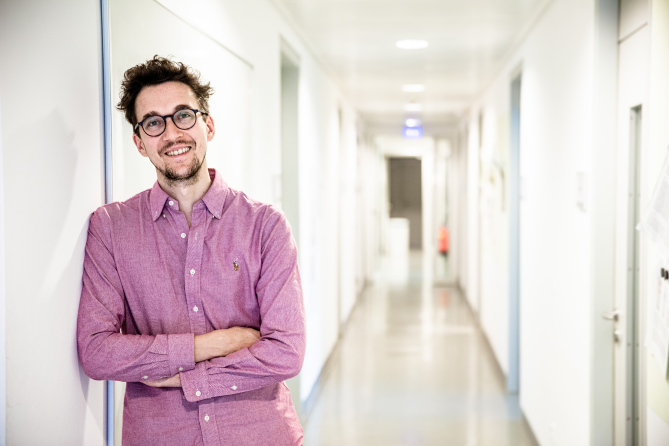May 11, 2022
Edouard Hannezo Becomes New Member of the ÖAW’s Young Academy
ISTA Assistant Professor joins the prestigious Academy for interdisciplinary exchange.
Edouard Hannezo studies how cells “know” how to behave in our body. To this end, he combines methods and expertise from cell biology and theoretical physics. For his excellent research and innovative approach, he has now been appointed as a new member of the Young Academy of the Austrian Academy of Sciences (ÖAW).

During early embryo development, cells need to take several complex decisions: they must divide, but also move around, so that they can form organs at the right place and at the right time. Assistant Professor Edouard Hannezo and his team of researchers study these processes using methods from theoretical physics. “We are using ideas from material science and fluid mechanics to understand the cells’ ability to self-organize,” he explains. “We want to find out how mechanical forces and biochemical signals between cells are used as means of communication to define the large-scale structure of complex organs like the mammary glands or the pancreas during development.” His research also deals with how cells heal wounds by actively communicating via mechanical and chemical waves. Edouard Hannezo has now become a member of the Young Academy of the Austrian Academy of Sciences (ÖAW).
The Young Academy consists of up to 70 established young scientists from various disciplines who have excelled in their fields. Its goal is to promote scientific exchange and enable innovative research. “I’m really excited to join this incredibly interdisciplinary institution, and to learn more about the research of its members from other fields!” During his research career, Edouard Hannezo always combined the fields of biology and physics with positions at the Institute Curie, Harvard and Cambridge. In 2017, he joined the Institute of Science and Technology Austria (ISTA) with his group “Physical Principles in Biological Systems”.



